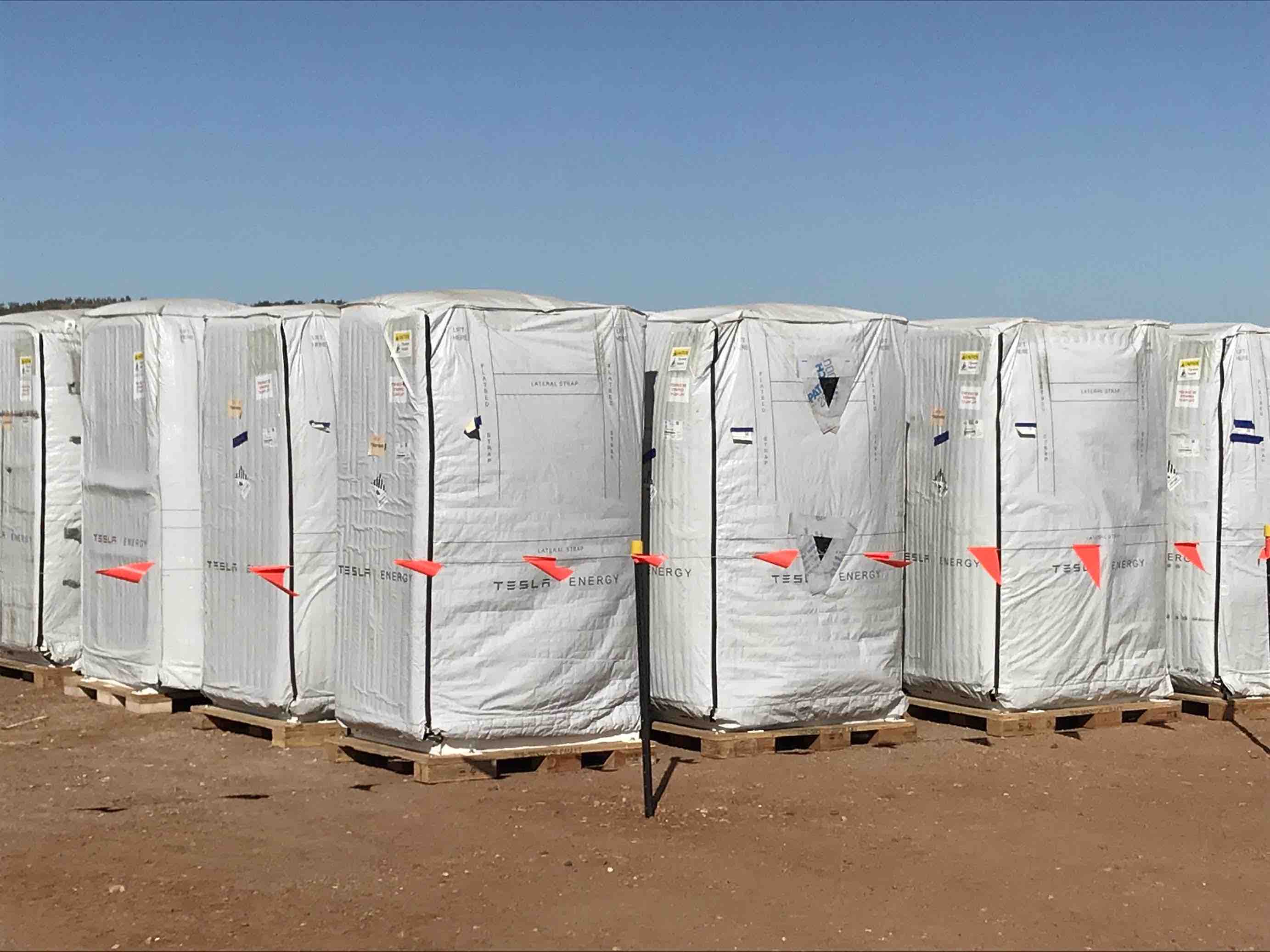The first Tesla Powerpack batteries have arrived on site in north Queensland, ready to be installed at what will be the world’s first grid-connected project combining large scale wind, solar and battery storage.
The first stage of the Kennedy Energy Hub will comprise 43.5MW of wind, 15MW of solar and 4MWh of the Tesla Powerpack 100kWh batteries, which arrived on site earlier this month.
Construction is due to be completed later this year, and will be the second leading battery storage project in Queensland, following the connection late last year of the Lakeland solar and battery project – the first to connect to a grid in Australia – at Cooktown further to the north.
For Tesla, it is the third major big battery storage project in Australia, following the ground-breaking and world’s largest battery at what is known as the Hornsdale Power Reserve, next to the Hornsdale wind farm, and the 20MW/50MWh battery now being installed at the Ganawarra solar farm in Victoria.
Windlab CEO Roger Price says the Kennedy Energy Hub – located between Townsville and Mt Isa – will demonstrate the effectiveness of wind and solar working together, and how battery storage can play a critical role in smoothing out and shifting supply.
Price says the wind and solar at Kennedy are highly complimentary.
“Of course, you get solar in the middle of the day, the wind resource picks up as the sun starts to set, blows through night, then then continues until after the sun rises, where it drops off,” he told the Large Scale Solar and Storage conference in Sydney this week.
Price says that the battery will help the project more effectively “clip the peak”, and dispatch at time of high demand. At Kennedy, it will also help in curtailment issues.
The site is currently limited to a 50MW connection point, potentially leading to around 3 per cent curtailment, and so the decision to “stuff” any surplus into the battery and release it at other times.
Price says that a bigger battery may be appropriate, but the economics of battery storage were still “marginal”, although “getting better quickly”. The Tesla batteries will be able to participate in the FCAS market, as the Tesla big battery in South Australia has done.
While the first stage of the Kennedy Energy Hub is world-leading, the potential of the overall project is truly breathtaking.
Windlab has previously talked of its plans for “Big Kennedy”, potentially combining 600MW of wind and 600MW of solar, which along with storage would be able to deliver “baseload” renewables at a far lower price than any new coal-fired generator that some have called for.
Price says that the area has potential for 2GW of wind energy, at a very high capacity factor of around 45 per cent – which he notes does not blow or produce at the same time as wind resources in South Australia and Victoria.
Those plans will depend on new network infrastructure, but Price says it will be critical to help Queensland meet its 50 per cent renewable energy target by 2030.









